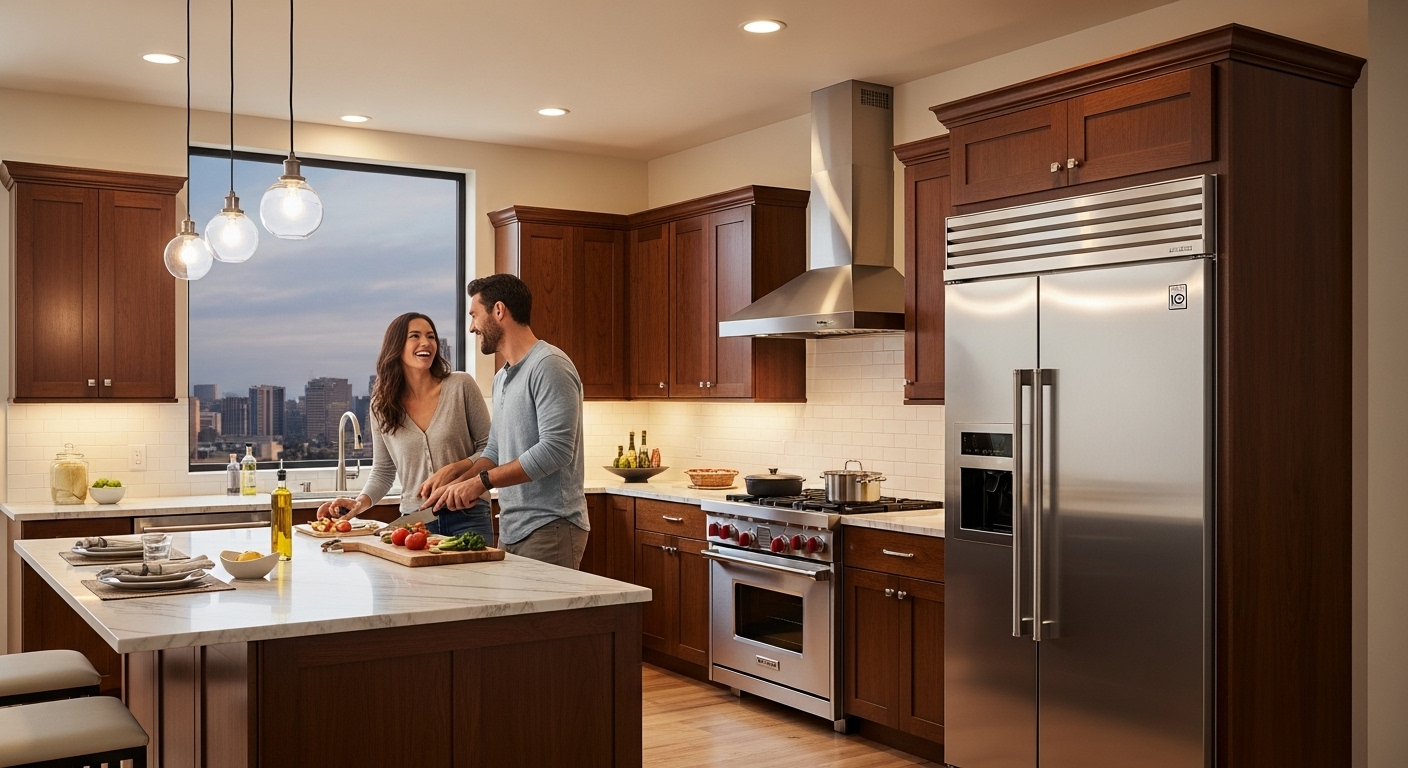Clean, fresh-tasting water and ice are essential features of modern refrigerators, but they depend on one crucial component: the water filter. If you own an LG refrigerator, understanding when and how to replace your water filter is key to maintaining water quality and keeping your appliance running smoothly.
Why Water Filter Replacement Matters
Your LG refrigerator’s water filter works tirelessly to remove contaminants, chlorine, and other impurities from your drinking water and ice. Over time, these filters become saturated with the very particles they’re designed to capture. A clogged or expired filter can lead to slower water flow, poor-tasting water, and potentially allow contaminants to pass through untreated.
When to Replace Your Filter
LG recommends replacing your refrigerator water filter every six months under normal usage conditions. However, several factors might require more frequent changes:
Signs it’s time for a new filter:
- The filter indicator light on your refrigerator turns red or displays a warning
- Water flow from the dispenser becomes noticeably slower
- Water or ice develops an unusual taste or odor
- You have a larger household that uses more water than average
- Your local water quality is particularly poor
Identifying Your LG Filter Model
LG refrigerators use several different filter models, and using the correct replacement is crucial. The most common types include the LT800P, LT700P, LT600P, and LT500P. You can find your filter model number in three ways:
First, check the existing filter itself—the model number is typically printed on the filter housing. Second, consult your refrigerator’s user manual, which will specify the compatible filter model. Third, look inside the refrigerator where the filter is located; LG often places a label indicating the correct filter type.
Step-by-Step Replacement Process
Replacing an LG water filter is designed to be straightforward and doesn’t require any tools. Most LG refrigerators have filters located either in the upper right corner of the refrigerator compartment or in the base grille at the bottom of the unit.
For internal filters (upper right corner):
Start by locating the filter cover, which is usually marked with a filter icon. Press the release button or twist the cover counterclockwise to open it. Gently pull the old filter straight out—be prepared for a small amount of water to drip, so having a towel handy is wise.
Before installing the new filter, remove any protective caps or seals. Line up the new filter with the housing and push it firmly into place until you hear a click or feel it lock. Close the filter cover by twisting it clockwise or pressing it until it snaps shut.
For base grille filters (bottom front):
Open the filter cover at the base of the refrigerator by turning it counterclockwise. Pull the old filter straight out from its housing. Insert the new filter into the housing and turn it clockwise until it locks into place. Close the cover by turning it clockwise.
Important Post-Installation Steps
After installing a new filter, you’ll need to flush the system. Run approximately two to three gallons of water through the dispenser to remove any air pockets and carbon particles from the manufacturing process. This typically takes about five minutes of continuous water flow. Don’t be alarmed if the water appears cloudy at first—this is normal and will clear quickly.
Remember to reset your filter indicator light after replacement. On most LG models, press and hold the filter reset button for three seconds until the light changes from red to green or the display confirms the reset.
Choosing Genuine vs. Compatible Filters
When shopping for replacement filters, you’ll encounter both genuine LG filters and third-party compatible options. Genuine LG filters are certified to meet the manufacturer’s specifications and maintain your warranty coverage. They’re tested specifically for LG refrigerators and guaranteed to fit properly.
Compatible filters from reputable third-party manufacturers can be significantly less expensive while still providing adequate filtration. If you choose this route, ensure the filter is NSF certified and specifically designed for your LG model. Be aware that some compatible filters may void portions of your warranty, so read the fine print carefully.
Cost Considerations
Genuine LG water filters typically range from $40 to $60 each, depending on the model. While this might seem expensive for a six-month replacement cycle, consider that it breaks down to just $7 to $10 per month for clean, filtered water—far less than buying bottled water. Third-party certified filters can reduce costs by 30 to 50 percent.
Maintaining Water Quality Between Changes
To maximize your filter’s lifespan and maintain optimal water quality, consider these tips: Run the water dispenser regularly to prevent stagnant water in the lines, clean the exterior water dispenser nozzle monthly to prevent bacteria buildup, and keep track of your installation date by marking it on your calendar or using a reminder app.
Troubleshooting Common Issues
If you experience problems after replacing your filter, most issues have simple solutions. Slow water flow usually means the filter wasn’t fully seated or air is trapped in the lines—try removing and reinstalling the filter, then flush the system again. If water leaks from the filter housing, ensure the filter is properly locked in place and check that you’re using the correct filter model. For water that tastes unusual after replacement, flush more water through the system—you may not have run enough water initially.
Environmental Considerations
Rather than discarding old filters in regular trash, look into recycling programs. Some retailers and manufacturers offer filter recycling services. LG has partnered with recycling initiatives in various regions, so check their website for current programs. Proper disposal helps reduce plastic waste and is better for the environment.
The Bottom Line
Replacing your LG refrigerator water filter is a simple maintenance task that yields significant benefits for your health and your appliance’s performance. By staying on top of regular six-month replacements and following proper installation procedures, you’ll ensure your family always has access to clean, great-tasting water and ice. The small investment in time and money is well worth the peace of mind that comes from knowing your water is properly filtered.



